La Serena, The Little North, Chile

Caramor - sailing around the world
Franco Ferrero / Kath Mcnulty
Thu 24 Aug 2017 00:41
29:54.10S 71:15.07W Eleven hours by bus and we were back in Santiago. At last Franco was excited, for him this was where the journey really began. We caught another coach and six hours later stepped off in La Serena. To most Chileans, La Serena is the extreme north of the country, the same way Valdivia is seen as the far south! We'd booked a room in Hostel La Serena and Marcelo, the owner was an absolute star. Talking of celestial bodies, this area is the world centre for astronomy. The clear skies and clean air have attracted research organisations from around the globe and some of the largest telescopes are located in the Andean foothills nearby. 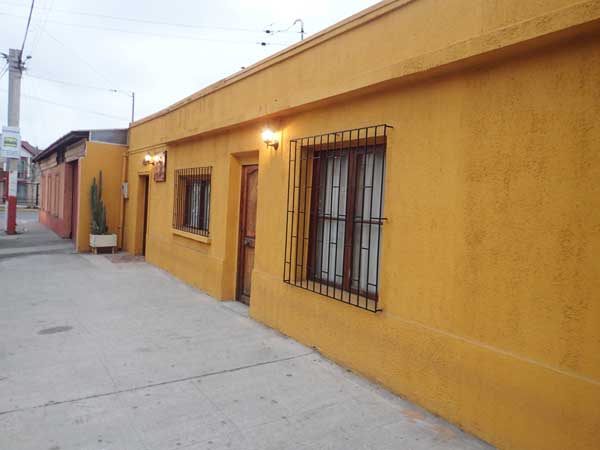 Hostel La Serena At 7pm a minibus picked us up and took us to the Cerro Mamalluca observatory, a facility for tourists run by the local council. The short introductory film blew our minds. It started with a nearby planet then zoomed out in light years to encompass the earth, our galaxy, the next nearest galaxy, the universe and the multiverse, all the time showing the distances in light years, a dazzling number. Our guide's introduction was: "Look through the telescope with your eye, not your hand ... a mere nudge and you will have travelled 25,000km through space!" We learnt some interesting facts. Most importantly for us sailors, the southern cross doesn't actually point south, you have to work out where the cardinal point is using a couple of key measurements taken from the constellation. (Four and a half times the distance between the top and bottom stars, in the direction of the foot of the cross gives the south celestial pole, straight down from there gives the south.) Beteljuice as mentioned in Douglas Adams' 'The Hitchhiker's Guide to the Galaxy' exists. It is a red supergiant, the largest and most luminous star to the naked eye. Alpha Centauri, on the other hand, is the closest visible star whereas Alpha Proxima is the actual closest. With the naked eye, we observed the Magellanic Clouds, 160,000 light years away, the nearest galaxies to our own Milky Way and the only ones visible without a telescope. These two small clusters are only visible from the Southern Hemisphere. And finally, a reminder that most of the stars that we see in the sky no longer exist, we are merely observing their light which has travelled thousands of years through space.  The Cerro Mamalluca telescope The next morning we caught the bus to a riding centre a short way inland. Here we met Julio our guide and Salomon and Tomasa our horses. We didn't go far but it was fun chatting with Julio and trekking through the countryside. Every few metres Julio would stop and say: "Isn't it beautiful?” 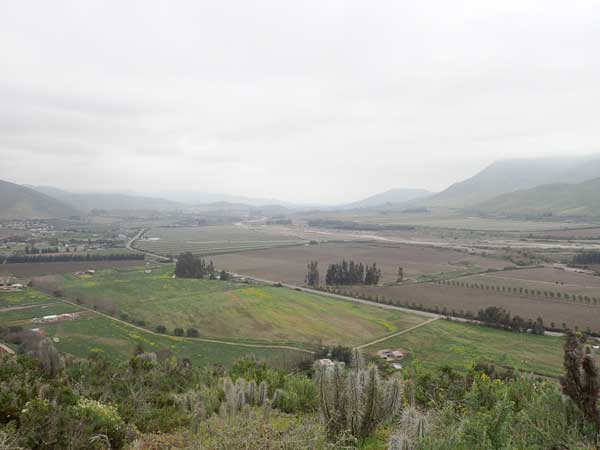 The Elqui Valley  Franco and Julio riding through the countryside 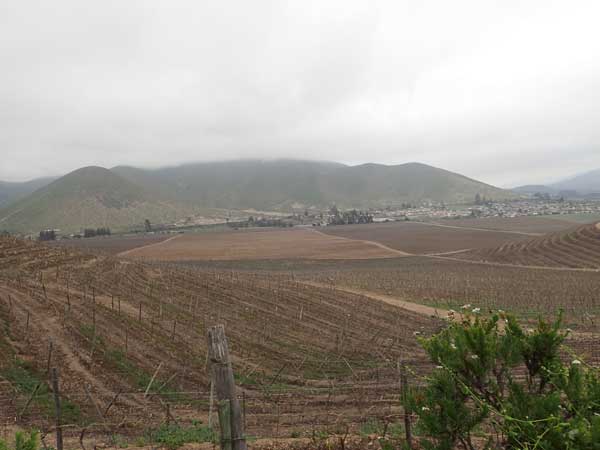 A vineyard 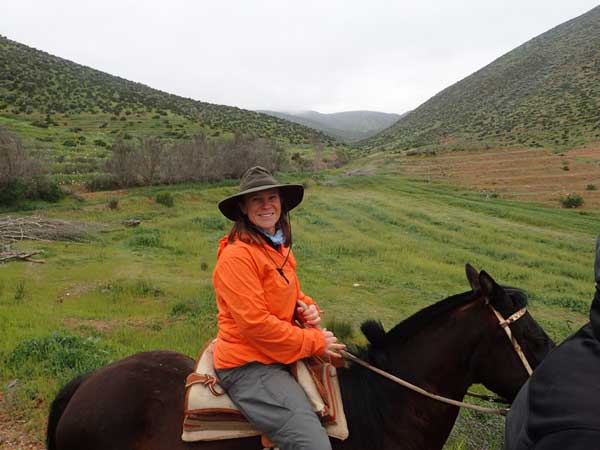 Kath on Salomon To us the landscape was semi-desert, to him it was a lush oasis. This winter was the first time it had rained properly in ten years and the hills had grassed over. Salomon and Tomasa were beautiful energetic and responsive horses, keen to run. In places though, the fresh green pasture was to good to waste and they asked to stop for a feed. 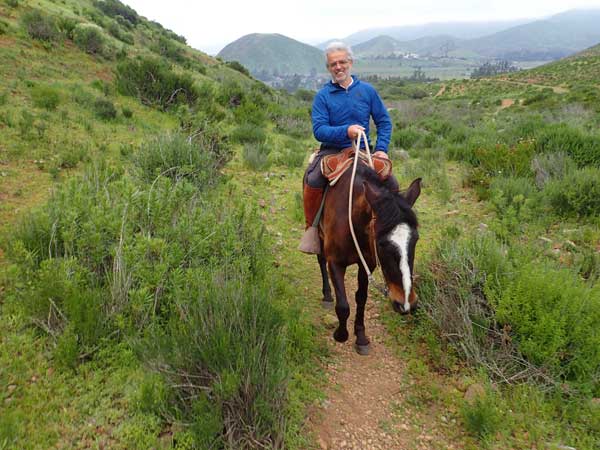 Franco and Tomasa riding through fresh vegetation 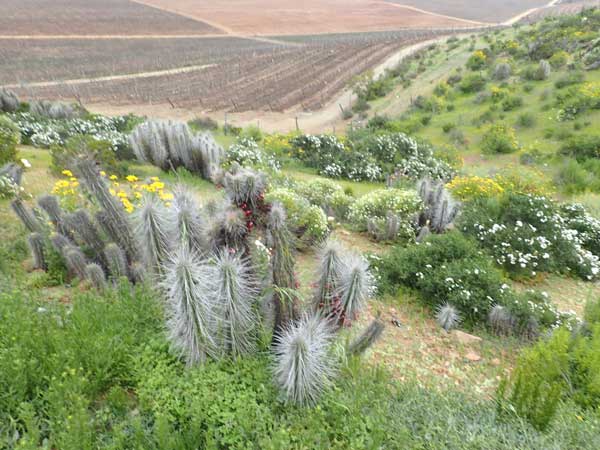 Cactus garden Julio doesn't know when he first was put on a horse, he remembers always being able to ride. He grew up on his parents' farm surrounded by cattle. He is a horse trainer by trade and works in agriculture when work is available. In October he may go and work in the copper mines in Bolivia, a job he enjoys, he told us, though the good wages may be the main factor.  Julio and Kath sharing a joke Back in La Serena, we wandered through the old town and along the shore front. 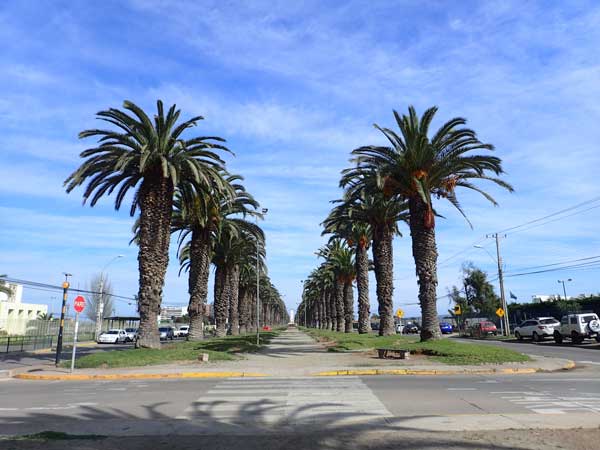 The main avenue  An old fort on the beach La Serena is Chile's second oldest city. It was founded in 1544 but was destroyed by natives a few years later and suffered repeated pirate attacks, many of them British. In the nineteenth century silver was discovered nearby which sparked a boom and led to the construction of La Serena's finest buildings. We were impressed how clean and modern the city is, by Chilean standards, but finding somewhere to eat something other than Chilean hot dogs and sandwiches proved difficult. It is as if the food tastes haven't caught up with the increasing level of affluence. Once more we boarded a bus - next stop Iquique. |